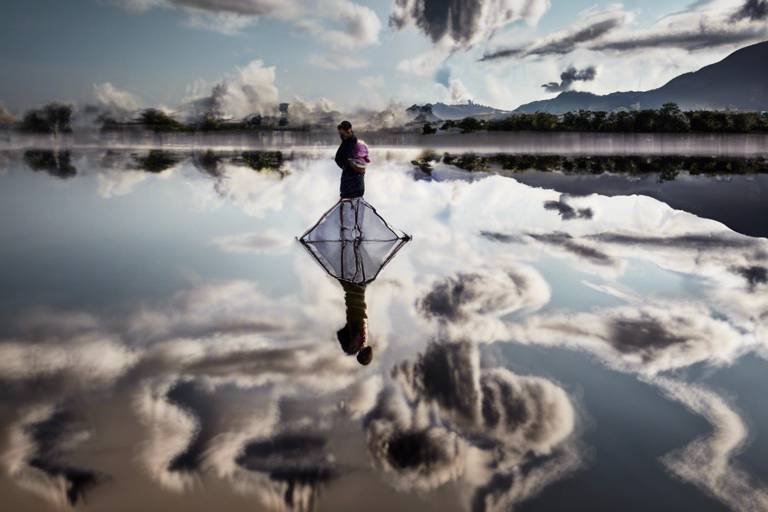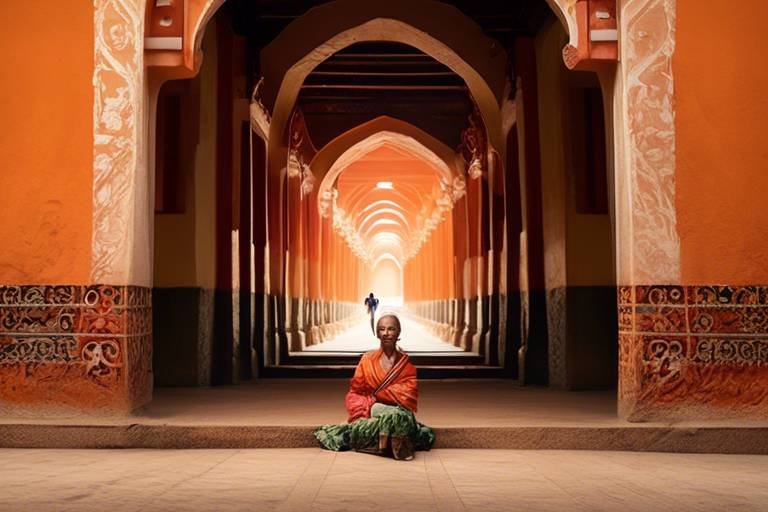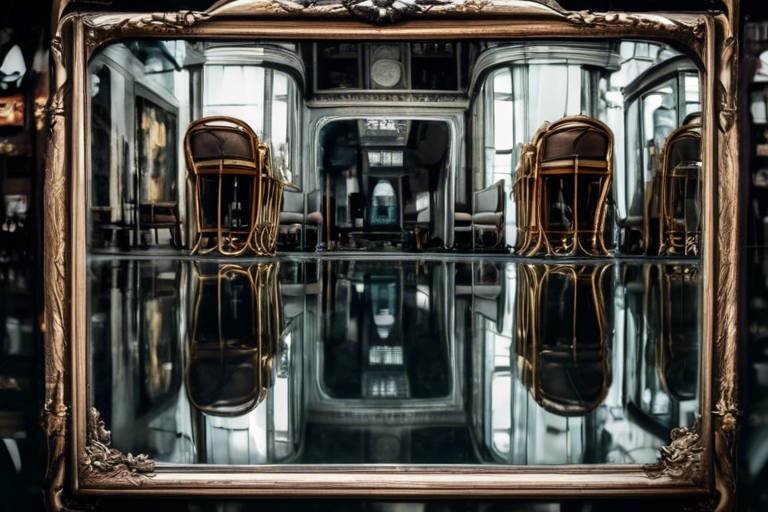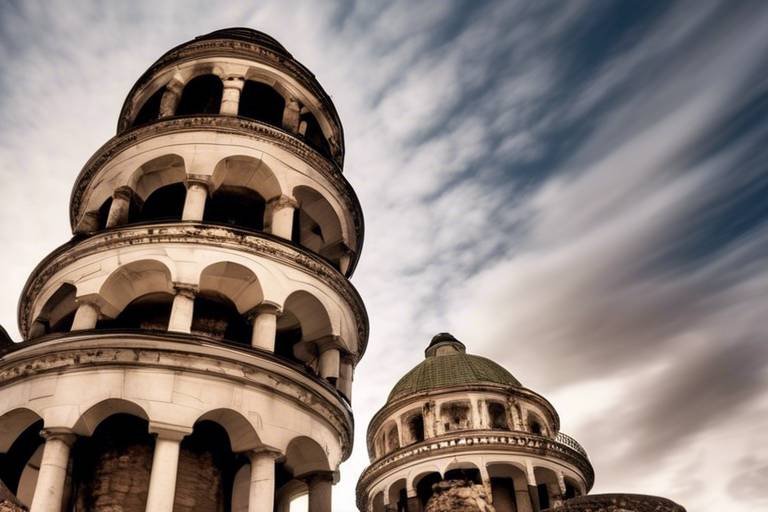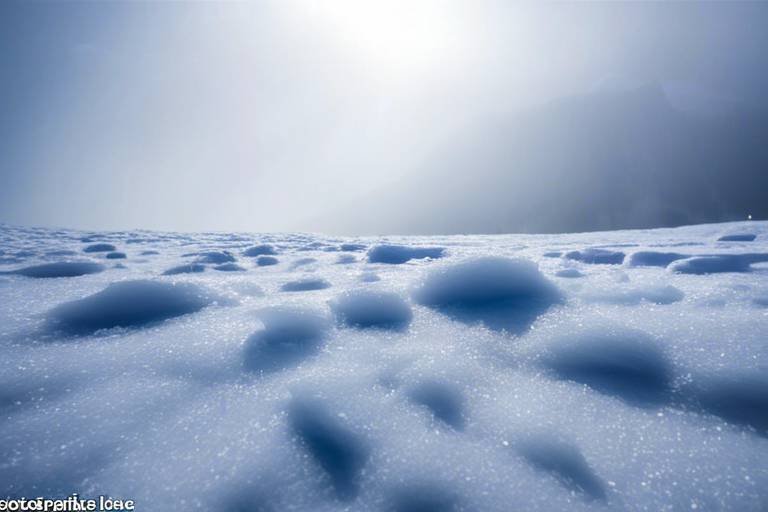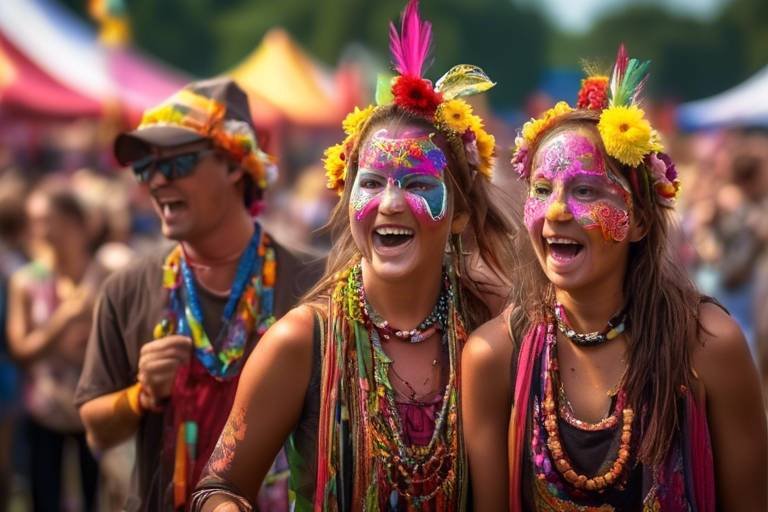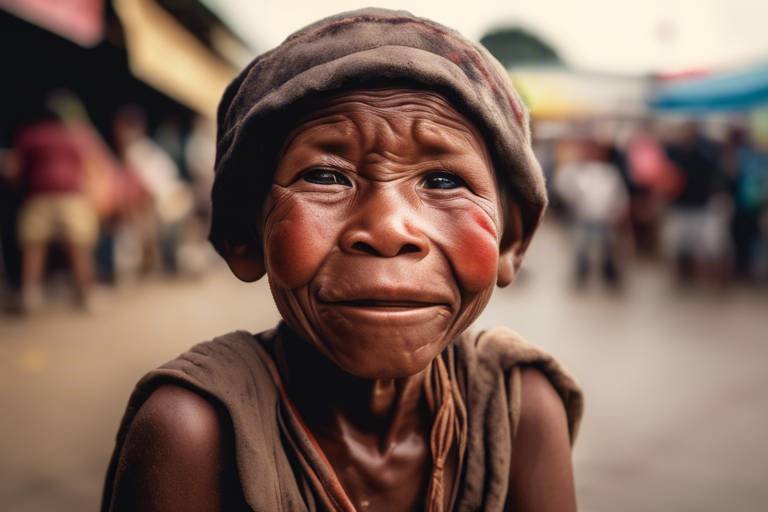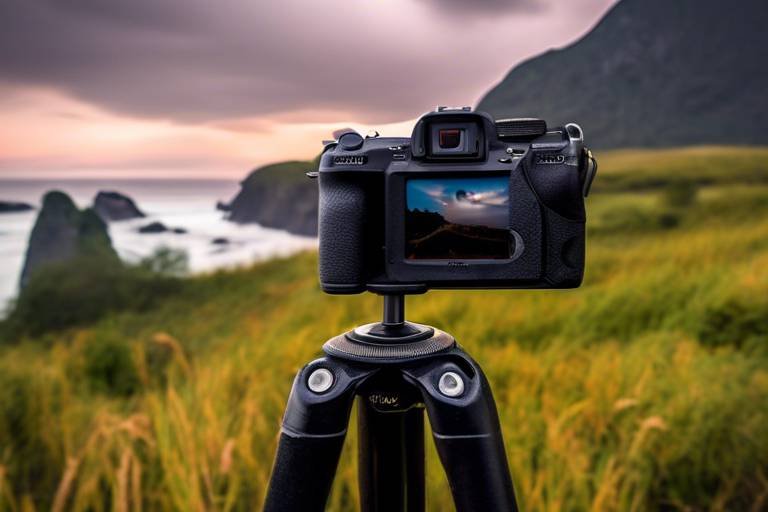Tips for Photographing Iconic Landmarks in Different Seasons
Photographing iconic landmarks in different seasons offers a unique opportunity to capture the essence of these famous sites in varying atmospheres and backdrops. Each season brings its own charm and challenges, requiring photographers to adapt their techniques and gear to make the most of the changing conditions. From the vibrant colors of spring to the snowy landscapes of winter, mastering the art of seasonal landmark photography can elevate your portfolio and storytelling capabilities.
Researching Light Conditions
When it comes to capturing stunning images of iconic landmarks in different seasons, one of the key factors to consider is the light conditions. Researching and understanding how the angle and quality of light change throughout the year can significantly impact the outcome of your photographs. Whether it's the soft, warm light of a summer sunset casting a golden glow on a monument or the crisp, clear light of a winter morning highlighting intricate details, each season offers unique opportunities to play with light and shadow.
By studying the patterns of light during different seasons, photographers can plan their shoots more effectively. For example, the long shadows of early morning or late afternoon light in autumn can create a dramatic effect on a landmark's facade, while the soft, diffused light of a cloudy day in spring can enhance the colors and textures of the surroundings. Understanding how to work with natural light can elevate your landmark photography to a whole new level.
Adapting to Weather Challenges
Capture stunning images of famous landmarks year-round with these expert tips on adjusting your photography techniques and gear for each season.
When photographing iconic landmarks in different seasons, one of the key challenges you may face is the unpredictable weather conditions. From scorching heat to pouring rain or even snowfall, the weather can greatly impact your photography experience. To adapt effectively, it's crucial to be prepared with the right gear and protective measures. Consider investing in weather-sealed camera equipment to safeguard against moisture and extreme temperatures. Additionally, dress appropriately to stay comfortable and safe while shooting in diverse weather conditions. Remember, a little rain or snow can add a unique touch to your landmark photos, so embrace the weather challenges as opportunities for creativity.
Moreover, understanding the weather forecast for the location and season you plan to shoot in can help you anticipate and plan for potential challenges. Researching the typical weather patterns and conditions of a specific landmark during different seasons can give you valuable insights into what to expect and how to best prepare. By staying flexible and adaptable, you can turn weather challenges into advantages that enhance the mood and atmosphere of your photographs.
Furthermore, consider using accessories like lens hoods, filters, and protective covers to shield your camera from rain, wind, or snow. These tools can help maintain the quality of your images and prolong the lifespan of your equipment. Don't let weather challenges deter you from capturing stunning photos of iconic landmarks; instead, embrace the elements and use them to your advantage to create unique and memorable shots.
Q: How can I protect my camera from extreme weather conditions?
A: To protect your camera from harsh weather, consider using a weather-sealed camera body and lens, along with accessories like rain covers and lens hoods. Additionally, keep your camera and gear dry by using silica gel packs or storing them in waterproof bags when not in use.
Q: What are some tips for shooting in snowy conditions?
A: When photographing landmarks in snowy weather, adjust your exposure settings to prevent overexposure due to the brightness of the snow. Use a faster shutter speed to capture falling snowflakes sharply, and consider incorporating footprints or snow-covered trees for added visual interest in your compositions.
Q: How can I stay safe while shooting in extreme weather?
A: Prioritize your safety when shooting in extreme weather by dressing in layers, staying hydrated, and knowing when to seek shelter. Keep an eye on changing weather conditions and be prepared to move to a safe location if necessary. Always prioritize your well-being over getting the perfect shot.
Selecting the Right Gear
When it comes to photographing iconic landmarks in different seasons, selecting the right gear is crucial to ensure you capture the best possible images. Your choice of equipment can greatly impact the quality and outcome of your photos. It's essential to consider the specific needs and challenges posed by each season when deciding on the gear to use.
For winter photography, investing in a sturdy camera bag that is weatherproof can protect your gear from snow and moisture. Additionally, carrying extra batteries and keeping them warm can help prolong their lifespan in cold temperatures. A tripod with rubber feet is also beneficial for stability on icy surfaces.
When shooting landmarks in spring or summer, lightweight and breathable clothing is essential to stay comfortable during long shooting sessions under the sun. A lens hood can prevent lens flare and protect your lens from dust and debris. Consider using a polarizing filter to enhance the colors of the sky and foliage.
Autumn photography may require gear that can withstand unpredictable weather conditions. A rain cover for your camera can shield it from rain showers, while a lens cloth is handy for quickly wiping off any water droplets. A wide-angle lens is great for capturing the vibrant colors of fall foliage and expansive landscapes.
Regardless of the season, having a versatile camera bag with adjustable compartments can help you organize and protect your gear effectively. Investing in high-quality lenses suited for landscape photography can significantly improve the sharpness and clarity of your images. Don't forget to carry lens cleaning supplies to ensure your photos are free from smudges and dirt.
Utilizing Seasonal Elements
When it comes to photographing iconic landmarks in different seasons, **utilizing seasonal elements** can truly elevate your images to a whole new level. Imagine capturing the Eiffel Tower dusted with a light blanket of snow in winter or the Taj Mahal surrounded by vibrant fall foliage. These seasonal elements not only add visual interest but also convey a sense of time and place in your photographs.
To **make the most of seasonal elements**, consider the natural beauty that each season brings. In the spring, cherry blossoms can provide a soft and romantic backdrop for landmarks like the Japanese Pagoda. During the summer, lush greenery can frame a historic castle beautifully. In autumn, the warm hues of changing leaves can create a striking contrast against stone structures.
**Experimenting with seasonal elements** allows you to tell a story through your photographs. For example, capturing the Great Wall of China with vibrant fall colors can symbolize the passage of time and the resilience of ancient structures. Alternatively, photographing the Statue of Liberty against a backdrop of snow can evoke a sense of solitude and endurance.
**Integrating seasonal elements** into your landmark photography requires a keen eye for detail and a creative approach. Consider how different weather conditions can enhance or detract from the beauty of a landmark. For instance, misty mornings in the winter can create a dreamy atmosphere around a castle, while a clear blue sky in the summer can highlight intricate architectural details.
Considering Tourist Crowds
When photographing iconic landmarks in different seasons, one crucial factor to consider is the presence of tourist crowds. These crowds can either enhance the atmosphere of your photos by adding a sense of liveliness and scale, or they can detract from the focus of the landmark itself. How can you navigate this challenge?
One approach is to embrace the presence of tourists and incorporate them creatively into your compositions. By strategically positioning yourself and adjusting your framing, you can use the crowds to your advantage, showcasing the popularity and significance of the landmark. Additionally, including people in your photos can add a dynamic element, telling a story of human interaction with the iconic site.
On the other hand, if you prefer to capture the landmark in a more serene and isolated manner, timing is key. Consider visiting during off-peak hours or less popular seasons to minimize the number of tourists in your shots. Early mornings or late evenings often offer quieter moments that allow you to focus on the landmark itself without distractions.
Furthermore, patience and observation are essential when dealing with tourist crowds. Take the time to study the flow of people around the landmark and anticipate moments of relative emptiness or interesting group formations that could enhance your photos. Sometimes, waiting for the right opportunity to capture the landmark without a crowd can result in a truly unique and captivating image.
Remember, tourist crowds are a natural part of visiting and photographing iconic landmarks. Instead of viewing them as obstacles, consider them as part of the landscape and use their presence to your advantage in creating compelling and authentic photographs that reflect the landmark's popularity and allure.
Exploring Different Perspectives
When it comes to photographing iconic landmarks, exploring different perspectives can truly elevate your images to new heights. Imagine standing in front of a famous structure and contemplating the myriad of angles and viewpoints you could capture it from. Each perspective offers a unique story to tell, a different emotion to convey, and a fresh way to showcase the landmark's beauty.
By experimenting with various angles and compositions, you can discover hidden gems in well-known landmarks. Consider getting down low to the ground for a dramatic effect or finding a vantage point high above for a sweeping view. Changing your perspective can transform a cliché shot into a masterpiece that stands out from the rest.
Think of your camera as a paintbrush and the landmark as your canvas. Just as an artist explores different brush strokes and colors to create a masterpiece, a photographer explores different perspectives and angles to capture the essence of a landmark in a unique way. Embrace your creativity and dare to see the familiar in a new light.
Moreover, playing with perspectives allows you to infuse your own style and personality into the photographs. Whether you prefer a minimalist approach with clean lines and symmetry or a more dynamic style with bold angles and dramatic lighting, exploring different perspectives empowers you to showcase landmarks in a way that resonates with your artistic vision.
Remember, the beauty of photography lies in its ability to capture moments from our own point of view. By exploring different perspectives when photographing iconic landmarks, you not only create visually striking images but also invite viewers to see the world through your eyes, experiencing the magic of these landmarks in a whole new light.
Post-Processing for Seasonal Effects
Capture stunning images of famous landmarks year-round with these expert tips on adjusting your photography techniques and gear for each season.
After capturing breathtaking images of iconic landmarks in different seasons, the post-processing stage plays a crucial role in enhancing the seasonal characteristics and overall appeal of your photos. By utilizing various editing techniques, you can bring out the best in your images and emphasize the unique elements each season has to offer.
One effective method is adjusting the colors in your photos to match the seasonal palette. For example, enhancing the warm tones of autumn foliage or the cool blues of winter snow can instantly evoke the feeling of that particular season. Additionally, experimenting with filters can help create a specific mood or atmosphere that complements the seasonal theme of your landmark photos.
Another post-processing technique to consider is fine-tuning the lighting and contrast in your images. By carefully adjusting these elements, you can highlight the seasonal details of the landmark, such as the play of light on summer architecture or the shadows cast by spring blossoms.
Furthermore, don't hesitate to explore creative editing options like adding textures or overlays to your photos to enhance the seasonal effects. These artistic touches can bring a new dimension to your landmark images and make them stand out even more.
Remember, the goal of post-processing for seasonal effects is not to alter the reality of the landmark but to accentuate its seasonal beauty and essence. By mastering these editing techniques, you can create captivating and visually striking photographs that truly capture the spirit of each season.
Stay tuned for the frequently asked questions section at the end of this article for more insights and answers to common queries about photographing iconic landmarks in different seasons.
Preserving the Landmark's Essence
Preserving the essence of iconic landmarks in your photographs is crucial to capturing their true beauty and historical significance. When photographing these renowned sites in different seasons, it's essential to approach them with respect and creativity to maintain their integrity. By understanding the cultural and historical importance of each landmark, you can ensure that your images not only showcase their seasonal charm but also preserve their essence for future generations to appreciate.
One way to preserve the landmark's essence is by carefully selecting angles and compositions that highlight its unique features and architectural details. Whether it's capturing the intricate carvings of a historic building or the grandeur of a famous monument, paying attention to these elements can help convey the landmark's true essence in your photographs.
Another important aspect of preserving the landmark's essence is to avoid over-editing or altering the images in a way that distorts its original appearance. While post-processing techniques can enhance the seasonal effects in your photos, it's crucial to strike a balance and maintain the authenticity of the landmark. By using subtle adjustments and filters, you can accentuate the seasonal beauty of the landmark without compromising its essence.
Furthermore, incorporating the surrounding environment and local culture into your photographs can help preserve the landmark's essence. Whether it's capturing the hustle and bustle of a vibrant cityscape or the tranquility of a natural setting, including these elements in your images can provide context and depth, enhancing the overall storytelling of the landmark.
Ultimately, preserving the essence of iconic landmarks in your photography requires a thoughtful and respectful approach. By understanding the significance of these sites and capturing them in a way that honors their history and cultural importance, you can create images that not only showcase their seasonal beauty but also contribute to their legacy for years to come.
Frequently Asked Questions
- What are the best times of year to photograph iconic landmarks?
The best times to photograph iconic landmarks depend on the specific landmark and the desired effect. Generally, spring and fall offer pleasant weather and beautiful natural elements, while winter can provide a unique perspective with snow. Summer may have longer daylight hours but could also mean dealing with more tourists.
- How can I protect my camera gear in different weather conditions?
To protect your camera gear in varying weather conditions, consider using weather-sealed equipment, carrying a protective camera bag, using lens hoods, and keeping silica gel packs to absorb moisture. Additionally, always have a microfiber cloth handy to wipe off any rain or snow that may get on your camera.
- What photography gear is essential for capturing landmark photos in different seasons?
Essential photography gear for capturing landmark photos includes a sturdy tripod for stability, a variety of lenses to adapt to different perspectives, lens filters to control light and reflections, and extra batteries and memory cards. Additionally, consider packing a remote shutter release for long exposures and a lens cloth for cleaning.
- How can I incorporate seasonal elements into my landmark photographs?
To incorporate seasonal elements into your landmark photographs, look for opportunities to include snow, fall foliage, blooming flowers, or changing colors in the background. These elements can add visual interest and context to your images, highlighting the seasonal beauty of the landmark.
- What post-processing techniques can enhance seasonal effects in landmark photos?
Post-processing techniques like adjusting colors, contrast, and saturation can enhance seasonal effects in landmark photos. Using filters to emphasize warm tones in fall or cool tones in winter can further enhance the seasonal atmosphere of your images.




